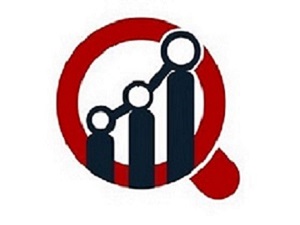
Electric Vehicle Battery Market Overview
According to a Comprehensive Research Report by Market Research Future (MRFR), Electric Vehicle Battery Market Information by Battery Type, Vehicle Technology, End Market, and Region – Forecast till 2032″ ” the Electric Vehicle Battery market will touch USD 192.55 billion by 2032, expanding from the valuation of USD 18.97 Billion it captured in 2023, at a rate of 33.60% over the study period (2023 to 2032).
The battery is the most vital part of any electric vehicle. A battery converts chemical energy into electric energy through an electrochemical reaction. An electrochemical reaction occurs when electrons migrate from one material to another in an electronic circuit. In many cases, the battery is designed to meet the requirements of the motor(s) and charging system that an electric vehicle needs. A typical EV battery pack is made up of blocks of 18–30 parallel cells connected in series to create the necessary voltage for propulsion.
Electric Vehicle Battery Market Competitive Landscape:
- Automotive Energy Supply Corporation (Japan)
- Panasonic Corporation (Japan)
- BYD Company Limited (China)
- Quallion (US)
- LG Chem Ltd (South Korea)
Get a Free Sample Report@
https://www.marketresearchfuture.com/sample_request/4810
Electric Vehicle Battery Market Drivers:
The development of complex electric vehicle systems, including batteries and smaller engines, is currently the focus of the auto industry. These systems are expected to have lower emissions at comparable costs. For batteries used in electric vehicles, lithium-nickel-manganese-cobalt-oxide (NMC) is now the material of choice. Additionally, among the electric vehicles in the United States that make use of lithium-nickel-cobalt-aluminum oxide (NCA) are the Tesla Model X, S, and 3.
In May 2023, Stellantis N.V. and Lyten, Inc. announced that Stellantis Ventures, Stellantis’ corporate venture fund, had invested in Lyten to speed the commercialization of Lyten 3D Graphene applications for the mobility sector, including the LytCellTM Lithium-Sulfur EV battery, lightweight composites, and novel on-board sensing. Lyten, a three-dimensional (3D) Graphene pioneer, will use the material’s extraordinary tunability to enable better vehicle performance and customer experience with the aim of decarbonizing the transportation sector.
Additionally, by providing tax incentives and other benefits, governments from all over the world are promoting the purchase of electric vehicles. A few national governments also exempt electric vehicles from paying highway tolls, notably those in China, Japan, and India.
Likewise, the South Korean government has announced that it will provide tax exemptions and subsidies of $900 million for the development and purchase of electric and fuel-cell vehicles. Thus, the rise in government backing for their creation and purchase in the form of tax credits, subsidies, and incentives is one of the main causes of the high demand for electric vehicles globally. The market for EV batteries will benefit greatly from this.
Market Restraints:
75% of lithium-ion batteries, 70% of cathode production capacity, and 85% of anode production capacity are produced in China. Furthermore, even though Europe only has a limited supply chain—cobalt processing makes only 20% of it—it is responsible for about 25% of global assembly. Furthermore, significant segments of the supply chain downstream of raw material processing are made up of South Korea and Japan, particularly in the very complex production of cathode and anode material.
Browse In-depth Market Research Report:
https://www.marketresearchfuture.com/reports/electric-vehicles-battery-market-4810
Market Segmentation
The Lithium-Ion Battery, Nickel Hybrid Battery, and Lead-Acid Battery categories make up the market segmentation for electric vehicle batteries.
Plug-in hybrid vehicles, battery electric vehicles, and hybrid electric vehicles are the types of vehicle technologies available in the worldwide market.
The market’s top end-users listed in the report include aftermarkets and OEMS.
Regional Insights
The Asia-Pacific electric vehicle battery industry will lead in the forthcoming years on account of the surging number of individuals using electric vehicles. The government’s emphasis on converting two- and three-wheelers into electric vehicles is also predicted to foster demand and hasten market expansion in this region throughout the anticipated period.
Read More Insightful Report:
Low Speed Vehicle Market Trends
Automotive Roof Racks Market Trends
Automotive Display Market Trends
Automotive Smart Tire Market Trends
Contact Information:
Contact Us:
Wantstats Research and Media Pvt. Ltd.
Office No 104, Pentagon 4,
Magarpatta City, Pune - 411028
Maharashtra, India.
Sales: +1 (855) 661-4441 (US)
+44 1720 412 167(UK)
Human Resource: +91 20-48532201
Mail: [email protected]
Tags:
Research Newswire, English










